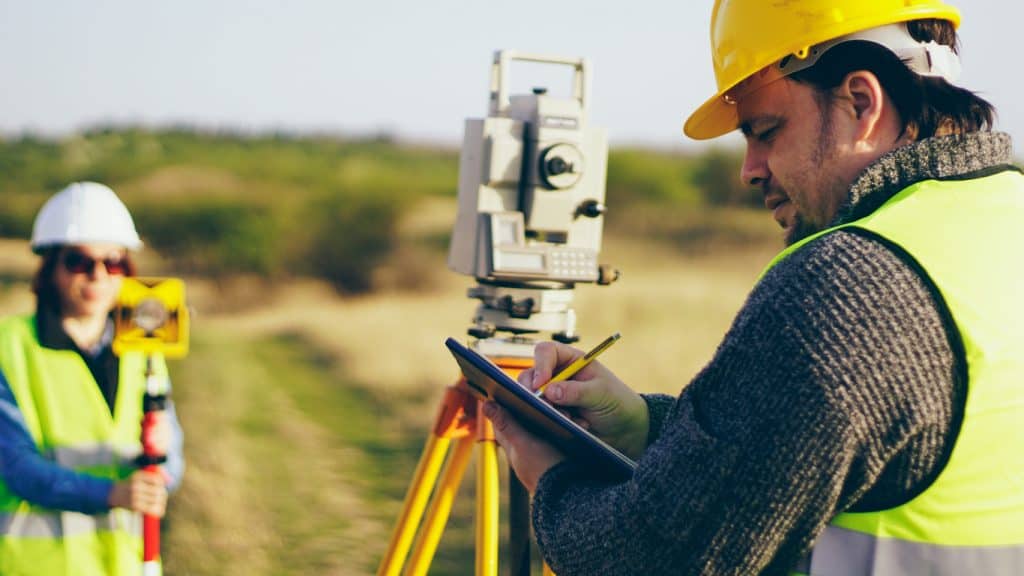GNSS/GPS (Global Positioning System/Global Navigation Satellite Systems) is becoming more popular for surveying and mapping. It is because GNSS provides precise three-dimensional coordinates to help record sites and landscapes without the limitations of optical transit systems.
There are several different methods for obtaining GNSS corrections, and each method can be adapted to the application’s needs. RTK is an example of a technique that can provide centimetre-level accuracy.
GPS vs. RTK
GPS is the most popular Global Navigation Satellite System (GNSS), a space-based radio positioning system. It consists of satellites from the USA, Russia, China and Europe, providing continuous Positioning, Navigation and Time (PNT) information signals for users worldwide.
RTK, or real-time kinematics, is a GNSS technique that combines satellite navigation data with correction streams to deliver 1cm accuracy in real-time. The technology works by using two receivers: a base, stationary at a precise location, and a moving receiver called a rover. The base measures errors and sends them to the rover, which uses these corrections to achieve centimetre precision.
This type of GNSS is ideal for surveying applications, such as boundary surveys or aerial photography, where you want to know where you are at all times and not be affected by atmospheric conditions like cloud cover. It can also be used in precision farming, machine control systems and other applications.
It has been used in commercial products for decades and is now becoming more accessible. Many companies have developed low-cost devices that can be used by non-professionals, allowing you to collect accurate positions of terrestrial points on your own.
While RTK is great for surveying and precision farming, it may not be suitable for other applications. Understanding the main differences between GNSS and RTK to choose the best GNSS solution for your application.
First and foremost, a good GNSS receiver from Bench Mark is the key to achieving high-precision positioning. There are several types of GNSS receivers, including single-band and multi-band devices. Both offer good performance in terms of GNSS reception, but the difference is in how much data they can receive from each GNSS satellite.
Click here – What Is Crispitos?
Accuracy
GPS and DNSS are navigation systems that use satellites’ signals to determine an object’s location. GPS provides 15-meter accuracy, but a small amount of the signal deteriorates due to atmospheric conditions and multipath. These problems can lead to 5 to 10-meter errors in GPS navigation.
To reduce these errors, a number of modifications are made to conventional GPS signals. The resulting improved location data is much more accurate than what is possible with a single-frequency signal. It allows for incredibly precise navigation.
Another way to improve accuracy is by using a fixed-based reference station network. These are generally very affordable and easy to set up. They can be used in a wide variety of situations, and they can significantly improve the performance of a GPS survey.
Functionality
GPS and RTK are both global positioning systems (GPS) that allow us to determine our position in relation to other points on the Earth. They are used for various purposes, from military and emergency services to commercial applications. The main difference is that GPS uses satellites to send data. In contrast, RTK uses a fixed-based reference station network that calculates and transmits differential corrections to roving receivers via radio.
GPS signals come from a constellation of 24 satellites that orbit the Earth. GPS receivers process these signals to calculate and display our position. However, several issues with GPS can cause inaccurate position data. These include atmospheric interference, fading, and the signal from each satellite is not always accurate.
One way to avoid this problem is to increase the speed at which GPS receives data. It can be done through several methods, including increasing the power of the GPS transmitter or changing the power of the receivers.
Typically, these reference stations are located in a central location and use a single base station. It allows all roving receivers to receive the same corrections from the base station, making it more likely that the rover will be in the right position.
Click here – What You Need to Know About Test-Tite Techno-Caps
Communication
What is the difference between GPS and NTRIP
GPS (Global Positioning System) is a satellite-based navigation system that provides precise location information. NTRIP is a protocol that allows GNSS data to be transmitted via the internet, eliminating the need for radio communication. It can be used with many different GNSS receivers and is commonly used in surveying, geodesy, and other applications where accurate GNSS positioning is required.
It also enables transmitting real-time correction data from a reference station to a GNSS receiver, allowing high-precision GNSS results to be achieved. It has several advantages over traditional GNSS data distribution methods, including wide availability, real-time accuracy, cost-effectiveness, and scalability.
Since NTRIP is available over the internet, it eliminates the need for radios that have a limited range and require special licences. It reduces the cost of field operations, as there is less equipment to carry around.
Moreover, it can be used in both stationary and mobile applications. It makes it more flexible than DGPS or RTK. Moreover, it is easier to integrate with existing GNSS data collection software.
However, it is important to remember that NTRIP must be connected to a broadband internet connection to work properly. It also requires a GNSS reference station that produces RTC data and an NTRIP Caster and NTRIP Clients that receive the data.
